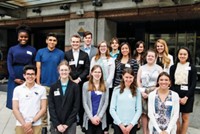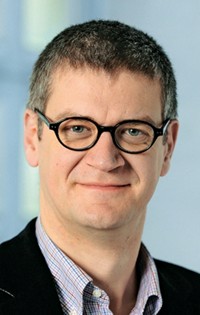Advertisement
Grab your lab coat. Let's get started
Welcome!
Welcome!
Create an account below to get 6 C&EN articles per month, receive newsletters and more - all free.
It seems this is your first time logging in online. Please enter the following information to continue.
As an ACS member you automatically get access to this site. All we need is few more details to create your reading experience.
Not you? Sign in with a different account.
Not you? Sign in with a different account.
ERROR 1
ERROR 1
ERROR 2
ERROR 2
ERROR 2
ERROR 2
ERROR 2
Password and Confirm password must match.
If you have an ACS member number, please enter it here so we can link this account to your membership. (optional)
ERROR 2
ACS values your privacy. By submitting your information, you are gaining access to C&EN and subscribing to our weekly newsletter. We use the information you provide to make your reading experience better, and we will never sell your data to third party members.
Environment
Chemistry Crosses Borders
Conferences in Germany, Africa highlight universality of chemists' creative intellect
by TAMARA NAMEROFF
September 27, 2004
| A version of this story appeared in
Volume 82, Issue 39
Two recent meetings reflect the spectrum of activities in which the American Chemical Society is involved internationally. They also highlight the vast differences in opportunity available to chemical scientists in the developed and the developing world.

Nearly 80 chemical scientists and engineers from Germany and the U.S., all under age 40, met on July 15–18 in Seeon, Germany, to become acquainted with science beyond the borders of their own fields and of their own countries at the 3rd German-American Frontiers of Chemistry (GAFOC) symposium. The biennial conference series, established in 2000 by ACS and the German Chemical Society, affords early-career scientists the opportunity to see the future of chemistry across the discipline as it is being shaped by its rising stars.
Participating scientists discussed the newest developments in more than a dozen topics, including genomics, nanomaterials, catalysis, tissue engineering and biomineralization, photonics, structural and functional analysis, and molecular recognition. The full conference program is on the Web at http://www.gdch.de/gdch/koop/gafoc/gafoc_3.htm.
The conference program reflected the growing interdisciplinarity of the frontiers of research. In a session on catalysis, Benjamin List, of the Max Planck Institute for Coal Research, focused on the introduction of enamine catalysis for asymmetric synthesis. Catherine L. Drennan of Massachusetts Institute of Technology discussed her laboratory's efforts to characterize biotin synthase and gain insights into the source of sulfur for the production of biotin. Franc Meyer of the University of Göttingen showed how metal-metal separation in metalloenzymes can be selectively tuned through ligand design to control bimetallic reactivity.
Equally impressive, but in an entirely different way, was the work presented at the 9th International Congress on Chemistry in Africa (ICCA9), held in Arusha, Tanzania, on Aug. 2–6. The triennial event provides an opportunity to focus on scientific advances on the continent. This year, more than 120 participants from 18 African nations and other countries shared their insights on a how chemistry could be applied to two of the most pressing needs on the continent: the eradication of poverty and disease.
The practice of chemistry in Africa is complicated by severe constraints on research funding, as well as lack of equipment and trained researchers and technicians. Despite these difficult circumstances, some excellent science is being fostered through regional research networks and through collaboration with scientists in developed countries. Papers presented at ICCA9 demonstrated that African chemists are making significant contributions to the discipline, especially in natural products characterization, medicinal chemistry, and environmental chemistry.
Presentations at GAFOC and ICCA9 that focused on malaria treatment showed how the availability of natural resources, equipment, facilities, and funding in the developed and developing world influence the selection of experimental approaches. Malaria is a serious, sometimes fatal, disease that is transmitted by mosquitoes. According to the U.S. Centers for Disease Control & Prevention, more than 40% of the people in the world are at risk.
At GAFOC, Peter H. Seeberger, who holds joint appointments at the Swiss Federal Institute of Technology in Zurich and the Burnham Institute, La Jolla, Calif., talked about an application of an automated oligosaccharide synthesizer that permits rapid synthesis of sugars of biological interest. Using this technology, he and his coworkers have developed a fully synthetic malaria vaccine that is now bound for clinical development.
Scientists in Africa are developing new ways to tackle malaria using traditional knowledge of native plants. Mary W. Ndung'u and her coworkers at the International Centre of Insect Physiology & Ecology and Jomo Kenyatta University of Agriculture & Technology, in Nairobi, presented a laboratory evaluation of root bark extracts of Meliacea species. The tree barks may provide a botanical method to control mosquito larva.
The array of science that was presented at ICCA9 and GAFOC showed that, above all, good science depends on creativity--something that scientists around the world share. Scientists who are committed to their work will find ways to advance the discipline, no matter what their circumstances are.
Tamara Nameroff is director of the Office of International Activities at ACS.






Join the conversation
Contact the reporter
Submit a Letter to the Editor for publication
Engage with us on Twitter